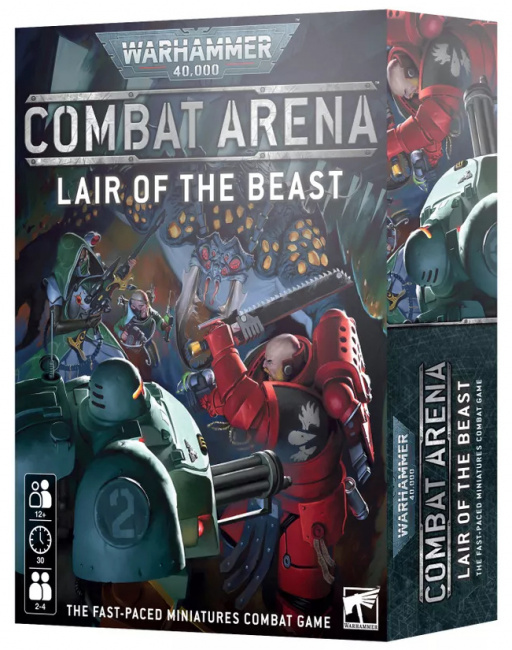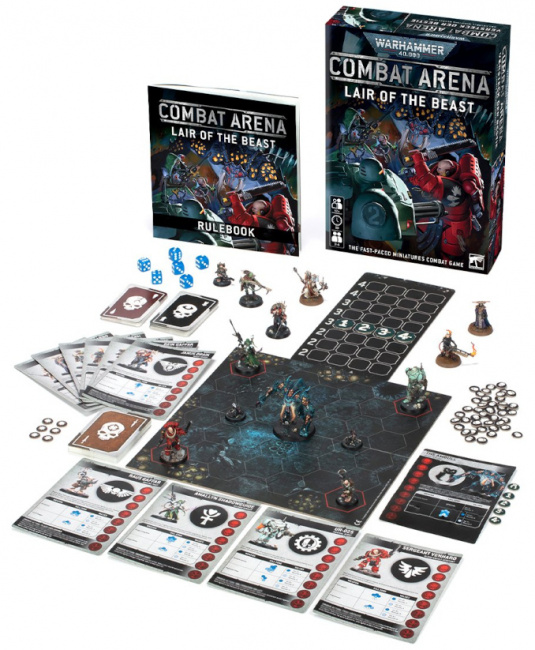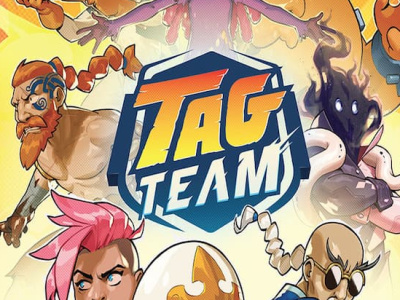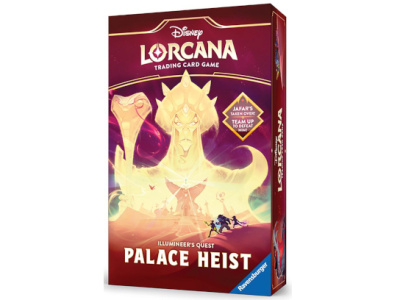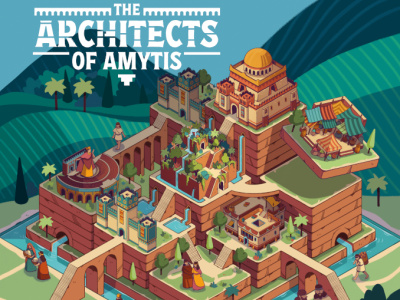Combat Arena: Lair of the Beast (Warhammer 40K)
Publisher: Games Workshop Ltd.
Release Date: September, 2023
MSRP: $34.99
Number of Players: 2-4
Playing Time: 30+ minutes
Product #: CA-02
Age Rating: 12+
ICv2 Rating: 3.5 Stars out of 5
This game is clearly designed and marketed to lure new players into the Warhammer community, with the hope of selling each one a lifetime of buying and painting miniatures. In fact, one full page of the small rulebook is an advertisement for a Warhammer 40,000 Introductory Set, making this game an introduction to an introduction.
The game consists of thirteen miniatures that need to be assembled. Eleven are very easy, and two of them a bit harder to assemble. This will require small tools to cut them loose from the plastic sprue holding them together. Once assembled, the gamer will have miniatures that are functional, but don’t look as good as the painted versions shown in the rulebook, which is another bit of advertising, since Citadel Miniatures happens to recommend their own brand of paints. Beginners at painting miniatures may find painting some of these, without guidance, to be frustrating.
The rulebook is striking in appearance, although short. Weirdly, of the ten main player characters, only four are given backstories in the rulebook, and space that could have been used for this is instead filled with artwork. Assembly instructions for the miniatures are well done, showing pieces and simple ways to put them together. The information on the character cards is also clear and fairly complete, but larger print might have been helpful.
The game itself has several formats. The selling point of the main game is that it is a semi-cooperative game of two to four adventurers uniting temporarily to fight a dangerous monster, and then turning on each other to retrieve an important prize. The variants in the rulebook are various forms of player vs. player, singly or in teams.
Rather than taking turns in order around the table, the players [and the monster, in that scenario] put initiative cards into a deck, and the players act as those are drawn. At the start of a game, everyone has four cards in that initiative deck, which can lead to some very awkward moments, if a character gets two or more turns in a row. Still, it creates suspense of a sort, because you never know which opponent will act next.
The combat system is a clever one. Each player has a set of action cards to use for movement or combat, five cards for five rounds. The trick is that using the character’s special attack often takes using TWO cards, leaving the character short an action later in the five rounds. At the end of five rounds, each player gets a new set of cards, and things continue.
While the game is listed as two to four players, anyone playing the monster scenario with fewer than four will have a much tougher time winning. With four, only bad luck will keep the players from defeating the monster, but then a problem arises. It turns out that the player vs. player part of the game is not as well balanced, which affects the last part of the main scenario, as well as all of the variants.
Each combat round, determined by the action cards, normally allows a player to roll one to four dice, with the number to hit determined by the range to the target and the weapon they are using [each character has two weapons]. The amount of damage depends on the range, weapon, and how many hits are rolled. Characters occasionally have an action card that includes the possibility of reducing incoming damage.
The balance problem occurs because some of the characters have very low amounts of damage they do per attack compared to others. Worse, the special attacks are even more wildly different. As an example, one character is much more useful in fighting the monster than in fighting other characters, because his special attack is planting bombs that the monster can be forced to run into, but players rarely have to position their characters in a way that interacts with the bombs. That same character has relatively weak melee and ranged attacks as well.
During combat with the monster, there is a good "catch-up" mechanism, in that whoever is the most damaged makes decisions about the monster’s movement, based on an action card drawn for the monster. That still mean that the heavily damaged character is at a disadvantage if the players kill the monster quickly, which can happen.
In addition, if all of the surviving characters are best at long-range attacks, and are basically out of range of each other, a stalemate can occur, as moving into the range of your own weapon may put you in range of two or more opponents.
Experienced players can use a drafting system to select characters, but since this is aimed at beginners to the Warhammer system, there will be a sharp learning curve.
The game may be best suited for an experienced Warhammer player to use to teach some of the system, and to get beginners interested in the miniatures game. Still, gamers who are simply new to Warhammer may enjoy the game quite a bit, once they learn to balance their own scenarios.
--Nick Smith
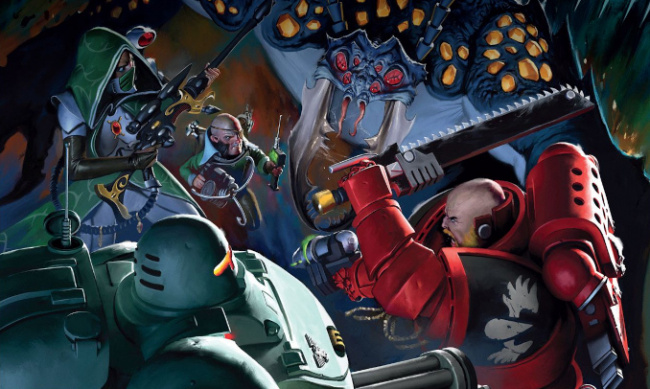
ICv2 Stars: 3.5 (out of 5)
Posted by Nick Smith on September 25, 2023 @ 1:25 am CT
MORE GAMES
New Arcade-inspired Fighting Game by Scorpion Masque
July 1, 2025
Hachette Boardgames announced Tag Team , a new arcade-inspired fighting game by Scorpion Masque.
New 'Battleship,' 'Monopoly,' and 'Yahtzee' Casino Games Launch Next Year
July 1, 2025
Hasbro has inked deals with new casino licensing partners, the company announced.
MORE REVIEWS
ICv2 Stars: 3.5 (out of 5)
June 20, 2025
Check out the review of Disney Lorcana TCG: Illumineer's Quest - Palace Heist, from Ravensburger.
ICv2 Stars: 3 (out of 5)
May 16, 2025
Here's a review of the board game The Architects of Amytis.



